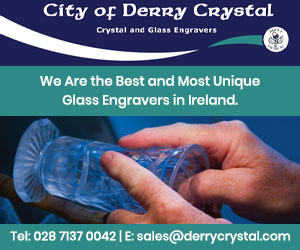21/12/2010
TV Product Placement Rules Published
Product placement will be allowed on UK TV programmes for the first time, the broadcast regulator Ofcom has confirmed.
From 28 February 2011, paid-for references for products and services will be permitted and to allow this, Ofcom has published the rules governing product placement, including what can and can't be shown.
Ofcom has also liberalised the rules on paid-for references to brands and products in radio programmes.
Both sets of rules will enable commercial broadcasters to access new sources of revenue, whilst providing protection for audiences.
The rules include restrictions on the types of products that can be placed and restrictions on the types of programmes in which products can be placed and also limits on the way in which products can be seen and referred to in programmes.
The TV rules reflect new UK legislation. This followed the Government's decision earlier this year to allow product placement in UK TV programmes, as a result of changes to European broadcasting legislation.
For radio, Ofcom has revised the rules on paid-for references to products and services in programmes.
The new rules, which take effect today, protect listeners by making sure that any commercial arrangements that result in on-air references to products or brands are made clear to the audience.
The revised rules for TV and radio will be incorporated in their own sections within Ofcom's Broadcasting Code, the rulebook for the broadcasting industry.
Product placement will be allowed in films (including dramas and documentaries), TV series (including soaps), entertainment shows and sports programmes.
However, it will be prohibited in all children's and news programmes and in UK-produced current affairs, consumer affairs and religious programmes.
The product placement of tobacco, alcohol, gambling, foods or drinks that are high in fat, salt or sugar, medicines and baby milk is banned by UK legislation.
Ofcom has also prohibited the paid-for placement of products and services that cannot be advertised on television, such as weapons or escort agencies. All these prohibitions are reflected in Ofcom's new rules.
The rules also state that product placement must not impair broadcasters’ editorial independence and must always be editorially justified. This means they cannot be created or distorted so that they become vehicles for the purposes of featuring product placement.
European and UK legislation also requires that placed products and services cannot be promoted or endorsed, or be featured in an unduly prominent way within programmes.
Following the introduction of the new rules, viewers will see a new product placement logo on their screens.
The logo, which Ofcom will issue in the New Year, must appear for a minimum of three seconds at the start and end of programmes so that viewers know which UK-produced programmes contain product placement.
The logo must also appear at the return of the programme following any advertisement breaks.
Commercial TV stations who intend to broadcast programmes containing product placement will launch an audience awareness campaign in the New Year and Ofcom will oversee this. This will include short information slots within the advertisement breaks of popular programmes.
The introduction of product placement has also given Ofcom the opportunity to liberalise some of the TV sponsorship rules.
This means that sponsors will be able to product place in programmes they are sponsoring, and sponsor's logos will be able to appear as brief sponsorship credits during programmes.
Commercial references on radio
In counterpoint, the new rules for radio have already taken effect.
Previously, the only commercial references allowed were sponsorship credits around programmes, and advertisements broadcast in commercial breaks.
The new rules will permit commercial references to be integrated within programming. However, broadcasters will have to ensure that listeners are always aware when promotions are paid-for.
However, paid-for references to brands and products in news and children's programming will also remain prohibited.
(BMcC/GK)
From 28 February 2011, paid-for references for products and services will be permitted and to allow this, Ofcom has published the rules governing product placement, including what can and can't be shown.
Ofcom has also liberalised the rules on paid-for references to brands and products in radio programmes.
Both sets of rules will enable commercial broadcasters to access new sources of revenue, whilst providing protection for audiences.
The rules include restrictions on the types of products that can be placed and restrictions on the types of programmes in which products can be placed and also limits on the way in which products can be seen and referred to in programmes.
The TV rules reflect new UK legislation. This followed the Government's decision earlier this year to allow product placement in UK TV programmes, as a result of changes to European broadcasting legislation.
For radio, Ofcom has revised the rules on paid-for references to products and services in programmes.
The new rules, which take effect today, protect listeners by making sure that any commercial arrangements that result in on-air references to products or brands are made clear to the audience.
The revised rules for TV and radio will be incorporated in their own sections within Ofcom's Broadcasting Code, the rulebook for the broadcasting industry.
Product placement will be allowed in films (including dramas and documentaries), TV series (including soaps), entertainment shows and sports programmes.
However, it will be prohibited in all children's and news programmes and in UK-produced current affairs, consumer affairs and religious programmes.
The product placement of tobacco, alcohol, gambling, foods or drinks that are high in fat, salt or sugar, medicines and baby milk is banned by UK legislation.
Ofcom has also prohibited the paid-for placement of products and services that cannot be advertised on television, such as weapons or escort agencies. All these prohibitions are reflected in Ofcom's new rules.
The rules also state that product placement must not impair broadcasters’ editorial independence and must always be editorially justified. This means they cannot be created or distorted so that they become vehicles for the purposes of featuring product placement.
European and UK legislation also requires that placed products and services cannot be promoted or endorsed, or be featured in an unduly prominent way within programmes.
Following the introduction of the new rules, viewers will see a new product placement logo on their screens.
The logo, which Ofcom will issue in the New Year, must appear for a minimum of three seconds at the start and end of programmes so that viewers know which UK-produced programmes contain product placement.
The logo must also appear at the return of the programme following any advertisement breaks.
Commercial TV stations who intend to broadcast programmes containing product placement will launch an audience awareness campaign in the New Year and Ofcom will oversee this. This will include short information slots within the advertisement breaks of popular programmes.
The introduction of product placement has also given Ofcom the opportunity to liberalise some of the TV sponsorship rules.
This means that sponsors will be able to product place in programmes they are sponsoring, and sponsor's logos will be able to appear as brief sponsorship credits during programmes.
Commercial references on radio
In counterpoint, the new rules for radio have already taken effect.
Previously, the only commercial references allowed were sponsorship credits around programmes, and advertisements broadcast in commercial breaks.
The new rules will permit commercial references to be integrated within programming. However, broadcasters will have to ensure that listeners are always aware when promotions are paid-for.
However, paid-for references to brands and products in news and children's programming will also remain prohibited.
(BMcC/GK)
Related UK National News Stories
Click here for the latest headlines.
29 June 2010
Ofcom Publishes Product Placement Plans
The broadcast regulator has published proposed new rules to allow product placement on TV. Ofcom also proposing to liberalise the rules on paid-for references to brands and products in radio programmes. These followed the Government's decision earlier this year to allow product placement on TV in the UK, as a result of changes to EU legislation.
Ofcom Publishes Product Placement Plans
The broadcast regulator has published proposed new rules to allow product placement on TV. Ofcom also proposing to liberalise the rules on paid-for references to brands and products in radio programmes. These followed the Government's decision earlier this year to allow product placement on TV in the UK, as a result of changes to EU legislation.
17 February 2011
Product Placement Gets Own Logo
The broadcast regulator, Ofcom has this week launched the logo that TV channels must use to signal to viewers when a UK-produced programme contains product placement. They said that the logo - a simple large 'P' - must appear for three seconds at the start and end of programmes, and after any advertising breaks.
Product Placement Gets Own Logo
The broadcast regulator, Ofcom has this week launched the logo that TV channels must use to signal to viewers when a UK-produced programme contains product placement. They said that the logo - a simple large 'P' - must appear for three seconds at the start and end of programmes, and after any advertising breaks.
01 March 2011
Product Placement Premières
A popular morning time TV show has become the first to feature product placement under new advertising guidelines, This Morning promoted the Nescafe coffee machine after the company paid a cool £100,000 fee.
Product Placement Premières
A popular morning time TV show has become the first to feature product placement under new advertising guidelines, This Morning promoted the Nescafe coffee machine after the company paid a cool £100,000 fee.
10 February 2010
UK TV Allowed Product Placements
There were conflicting views this month over the contentious issue of paid product placement on UK TV. The Department for Culture Media and Sport (DCMS) decision to allow the practice has been supported by the trade body, Pact.
UK TV Allowed Product Placements
There were conflicting views this month over the contentious issue of paid product placement on UK TV. The Department for Culture Media and Sport (DCMS) decision to allow the practice has been supported by the trade body, Pact.
08 May 2013
£21m For Low-Carbon Product Development
The UK government has awarded £21m to entrepreneurs to help develop new low-carbon products. £16m has been awarded under the Energy Entrepreneurs Fund, £2m under the first phase of Energy Storage competitions and £3m for Advanced Heat Storage. All three schemes are designed to encourage innovation in the low carbon sector.
£21m For Low-Carbon Product Development
The UK government has awarded £21m to entrepreneurs to help develop new low-carbon products. £16m has been awarded under the Energy Entrepreneurs Fund, £2m under the first phase of Energy Storage competitions and £3m for Advanced Heat Storage. All three schemes are designed to encourage innovation in the low carbon sector.
-
Northern Ireland WeatherToday:A sunny but frosty start for many. However cloud increases by midday with a few showers reaching the north coast, these mostly light but spreading inland this afternoon. Chilly. Maximum temperature 8 °C.Tonight:A rather cloudy evening with scattered showers. Becoming drier through the night with some good clear spells developing and a patchy frost away from coasts. Minimum temperature 0 °C.








